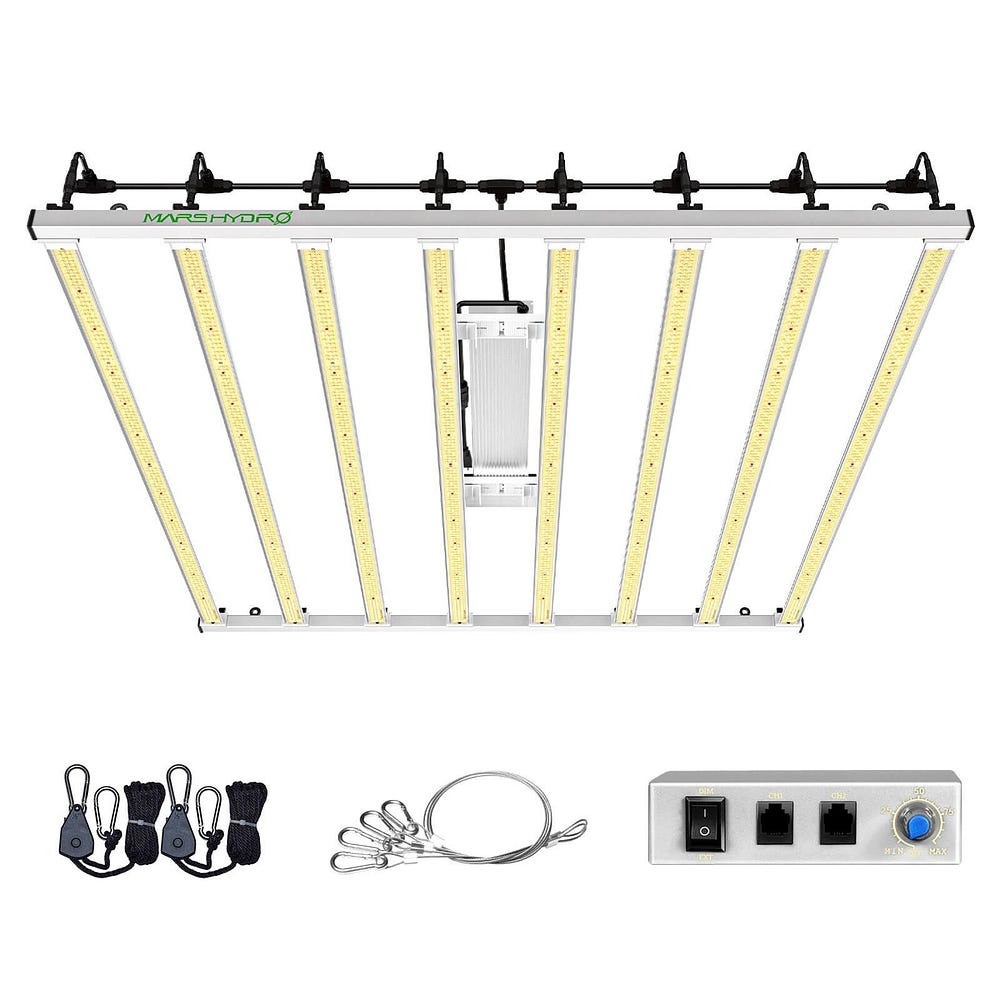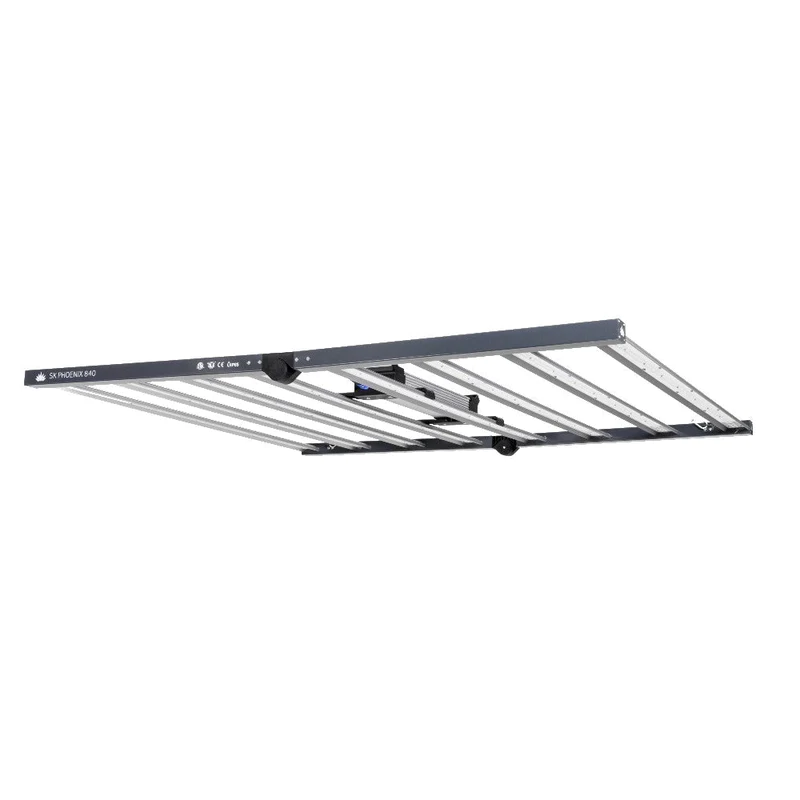- Home
- SHOP ECO FARM
-
TOP BRANDS
-
Grow Lights Brands
- Adjust-A-Wing
- Apollo Horticulture
- Bestva
- Black Dog LED
- California Lightworks
- ChilLED Grow Light
- Eco Farm
- HLG - Horticulture Lighting Group
- Kingled
- Kind LED
- Mars Hydro
- Morsen
- Neilo
- NextLight
- Phlizon
- PlatinumLed
- Roleadro
- Optic LED Grow Lights
- ViparSpectra
- Vivosun
- EYE Hortilux
- IPOWER
- NanoLux
- Phantom grow light
- Gavita grow lights
- Grower's Choice
- Lumatek
- Maxibright
- Yearld Pro
- ThinkGrow
- Crecer Lighting
- Green Sunshine Electric Sky
- fohse aries
- loriflux
- luxx
- fluence
- iluminar
- Lex
- LTC
- Rayonled
- FGI
- PHOTONTEK
- Grow Tents & Kits Brands
- Extraction & Harvest Brands
- Climate Control & Hydroponic Brands
-
Grow Lights Brands
- COMPANY INFO
- COOPERATE WITH US
- Blog
- Sign in
- Home
-
SHOP ECO FARM
- ECO Farm Grow Lights
- ECO Farm LED Grow Lights
- ECO Farm Quantum Board
- ECO Farm Samsung LED Grow Lights
- ECO Farm COB Grow Lights
- ECO Farm Commercial Lights
- ECO Farm Supplemental Grow Light
- ECO Farm Fluorescent grow lights
- ECO Farm HPS & MH Grow Lights
- ECO Farm CMH Grow Lights
- ECO Farm HID/CMH Bulbs & Ballasts
- ECO Farm Grow Tents & Kits
- ECO Farm 2x2ft Grow Kits
- ECO Farm 3x3ft Grow Kits
- ECO Farm 3.3x3.3ft Grow Kits
- ECO Farm 4x4ft Grow Kits
- ECO Farm 5x5ft Grow Kits
- ECO Farm Grow Tent - Standard Style
- ECO Farm Grow Tent - Extension & Roof & Lodge Style
- ECO Farm Extraction & Harvest
- ECO Farm Rosin Press Machine
- ECO Farm Dry & Wet Trimmers
- ECO Farm Oil Accessories
- ECO Farm Medicinal Plants Grinder
- ECO Farm Medicinal Plants Containers
- ECO Farm Medicinal Plants Dryer
- ECO Farm Refrigeration Dryer
- ECO Farm Climate Control & Other Accessories
- ECO Farm Inline Duct Fans
- ECO Farm Oscillating Fans
- ECO Farm Exhaust Fans
- ECO Farm Air Filter
- ECO Farm Duct Muffler
- ECO Farm Ventilation Kits
- ECO Farm Plant Humidifiers
- ECO Farm Plant Dehumidifiers
- ECO Farm Hydroponic Accessories
- ECO Farm Other Accessories
- ECO Farm Hydroponics Microscopes
-
TOP BRANDS
- Grow Lights Brands
- Adjust-A-Wing
- Apollo Horticulture
- Bestva
- Black Dog LED
- California Lightworks
- ChilLED Grow Light
- Eco Farm
- HLG - Horticulture Lighting Group
- Kingled
- Kind LED
- Mars Hydro
- Morsen
- Neilo
- NextLight
- Phlizon
- PlatinumLed
- Roleadro
- Optic LED Grow Lights
- ViparSpectra
- Vivosun
- EYE Hortilux
- IPOWER
- NanoLux
- Phantom grow light
- Gavita grow lights
- Grower's Choice
- Lumatek
- Maxibright
- Yearld Pro
- ThinkGrow
- Crecer Lighting
- Green Sunshine Electric Sky
- fohse aries
- loriflux
- luxx
- fluence
- iluminar
- Lex
- LTC
- Rayonled
- FGI
- PHOTONTEK
- Grow Tents & Kits Brands
- Apollo Horticulture
- Black Box
- CoolGrows
- Eco Farm
- GrowLab
- Gorilla Grow Tents
- Mars Hydro
- Quictent
- Secret Jardin
- Unit Farm
- TopoGrow
- VIVOSUN
- Topolite
-
COMPANY INFO
-
COOPERATE WITH US
- Blog
MARS HYDRO FC-E8000 800W Commercial LED Grow Light VS Spectrum King Phoenix 840W LED Grow Light
August 29, 2022
If you’ve recently decided to try your hand at indoor farming, setting yourself up for success is imperative; after all, you want to produce the highest quality yields you possibly can. In order to achieve that goal, investing in the right tools and equipment is an absolute must.
While there are several supplies that you’re going to want to put on the list of things you’ll need, lighting is arguably the most important. After all, every plant, no matter the species, needs light in order to grow. Typically, with outdoor-grown plants, that light would come from the sun; however, if you’re growing indoors, you obviously aren’t going to be able to access the sunlight, which means you’re going to need to invest in artificial grow lights.
While there are several different kinds of grow lights, there’s one type that today’s growers seem to love the most: LED.
What is the benefit of LED grow light VS HID and fluorescent grow light?
HID stands for high-intensity discharge lamp, which includes metal halide, high-pressure sodium, and mercury vapour.
These lamps contain a quartz tube filled with gas and electrodes on either end. An arc of electricity is sparked between two electrodes inside the tube to generate visible light.
Metal halide grow light and high-pressure sodium grow light have different light spectrum patterns, so usually, growers would have mixed use for their purposes, e.g. for vegging and for flowering
MH produced a blueish light spectrum(over 5500K), has little red light, better to use for lettuce, herbs vegetation or early vegetative stage of flowering plant, while HPS’ hue is yellowish-orange with little blue light(under 3500K), better for tomatoes, orchids, indoor plant that can flower.
MH Spectrum VS HPS Spectrum
In other words, there is no better choice than the other, the decision to make which type of grow light to go is based on what you grow.
However, if you must say which one is better than the others, it is LED grow light that can emit the full spectrum wavelength that the plant need for photosynthesis, It has a red light, blue light, and all other light spectrums just like the sunlight.
LED plant grow light has over 100,000hrs lifespan, five times longer as opposed to metal halide (ceramic metal halide), high-pressure sodium & fluorescent grow light 20,000hrs lifespan, with higher efficacy and less heat produced, no high power cooling system needed, you can save a lot of electricity bill all the year around, plus cutting down the maintenance cost & labor force fee.
Another edge is that the LED grow lighting has less lumen decay than MH or CMH, HPS, t5 or t8 fluorescent grow lights, it is still more powerful to thrive the plant when the rest HID or fluroescent grow lights are dead.
The biggest advantage of LED grow light fixture over the old MH HPS fluoresccent is that it offers more controlability. It can be dimmable by a PWM dimmer switch or it can be connected in a row with lead plug, adjusted brightness and light spectrum by smartphone app at one time in greenhouse or big hydroponic room.
Therefore, it is time to get rid of these outdated grow light fixtures and adhere to the most efficient LED grow lamp for growers in horticulture lighting.
MARS HYDRO FC-E8000 800W Commercial LED Grow Light

Features:
This MARS HYDRO LED grow light is an affordable alternative lighting solution for commercial cultivation in supplemental CO2 applications, delivering uniform PPFD around 1500μmol/m²/s at 10inch height, standard commercially-viable LED grow lights for all indoor horticulture adding extra CO2 like vertical farms, indoor houses. Featuring 3928 pcs BridgeLux chips and a special chip arrangement that allows a more even distribution and efficiency of 2.7 µmol/j, FC-E8000 can take care of every plant well and grow the best results. In a special combination of spectra, the FC-E8000 is a full spectrum LED grow light which beneficial to the entire plant growth cycle, with more red light added contributing to flowering.
Spectrum King Phoenix 840W LED Grow Light

Features:
Spectrum King’s Phoenix 840W is ideal for photon-hungry crops that can handle strong light. With 16% less wall power than standard HPS fixtures, the 840 provides some decent output compared to other fixtures while still saving electricity and heat. Spectrum King’s custom spectrum is tested and customized to maximize plant and flowering cycle growth. The intensity of this dimmable light can be as low as 10%, enabling growers to simulate a sunrise/sunset effect. Spectrum King’s innovative Cryo-Therm cooling technology features an ultra-thin profile that maximizes airflow and minimizes microclimates. The Phoenix 840 grow light is optimized for single or multi-level planting close to the canopy.
What to Look for in a Grow Light
Size
When deciding what size grow light you need, think about how many plants you’ll need to cover. Also, if you’re planning to move your light from place to place, you might want something lighter and portable, whereas if you know it’s going to stay put, that might not be as much of a factor. Also, consider the space where you plan to put it, and make sure there’s room for it to operate safely and not up against furniture, drapes, or other items.
Type
There are various types of grow lights to consider, from panels to ones that hang overhead or screw into a regular light fixture. The type of plants you have, the amount of existing natural light, and where your plants are located will help you narrow down your choices. Hanging lights are typically larger, while desktop lights are smaller and easy to move around. If you want a complete system, consider a full garden kit that includes the planter with a built-in light.
Wattage
Wattage isn’t as important as you might expect when it comes to grow lights, but it’s still a factor worth considering. The more important metric is actually PPFD, or photosynthetic photon flux density, which measures the specific light emission a lamp gives off.2 Because this is a bit complicated to figure out, wattage is a useful tool to determine the correct fixture for your plants. The rule of thumb is that you need 32 watts per square foot, so most indoor plants (especially herbs) will do just fine with a lower-watt light.
Conclusion
With the rapid development of LED technology in recent years, more and more growers are now turning to LEDs for indoor operations. Just a novelty a few years ago, LED grow lights now perform just as well, if not better, than HID lights, and they’ve become more affordable. Because LEDs offer many benefits, from consuming less energy to being stronger and longer lifespan, they are now an excellent choice for indoor cultivators of all skill levels. Thanks for reading!
Also in Indoor Grow LED Grow Light
HLG Greenhouse Pro HE HV 630W LED Grow Light VS Geeklight grow light 480W hydroponic led grow light
October 20, 2023
